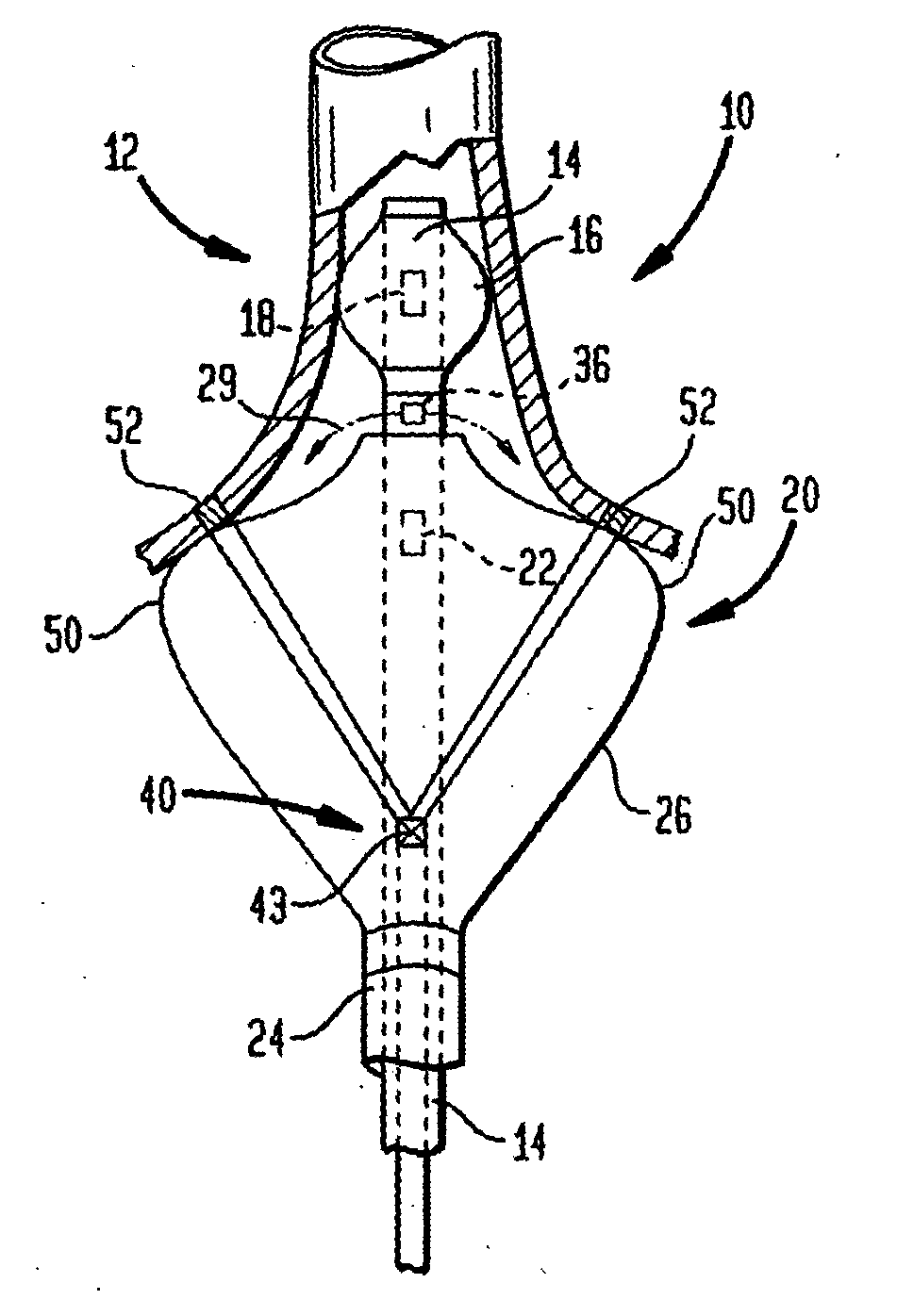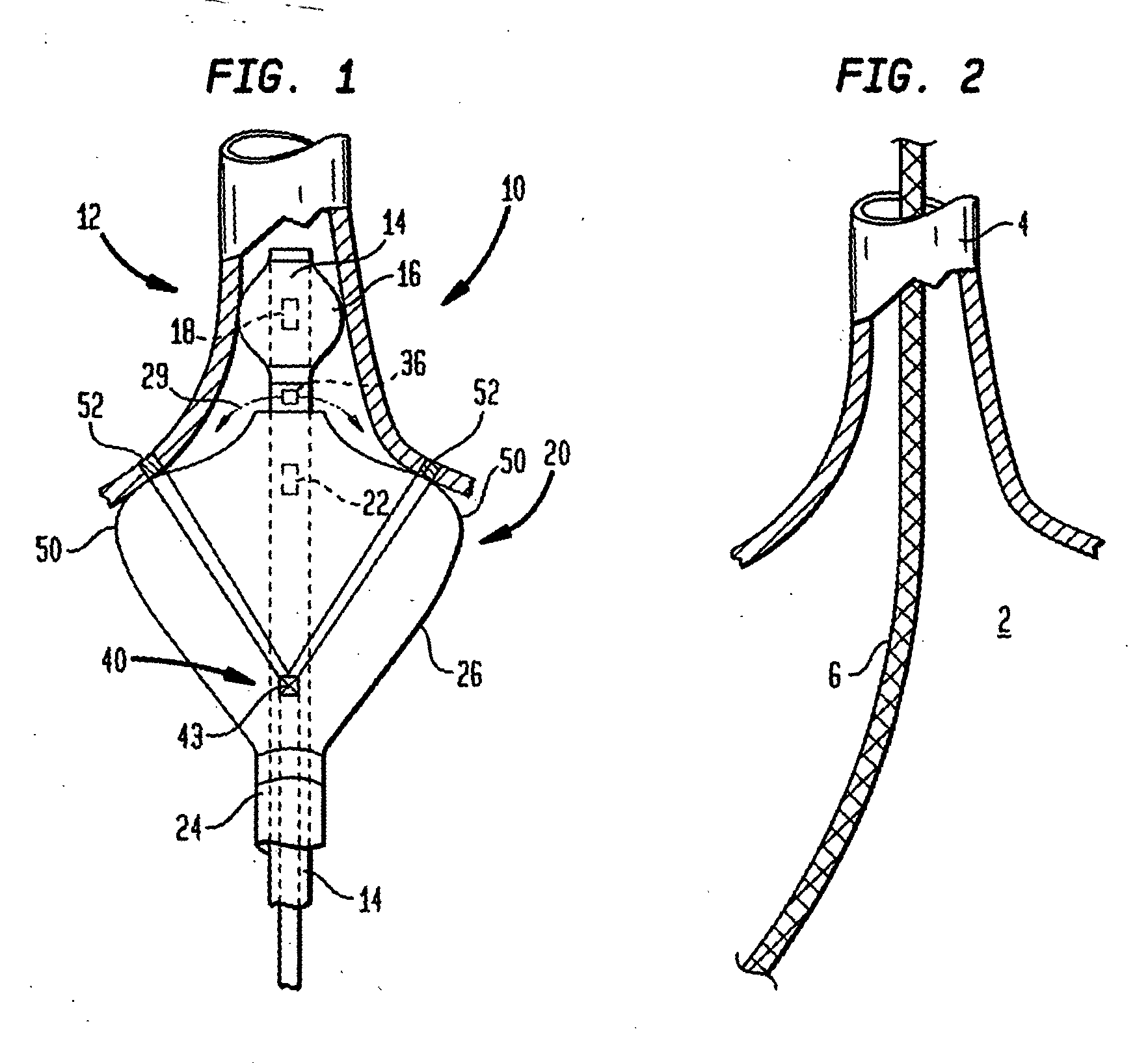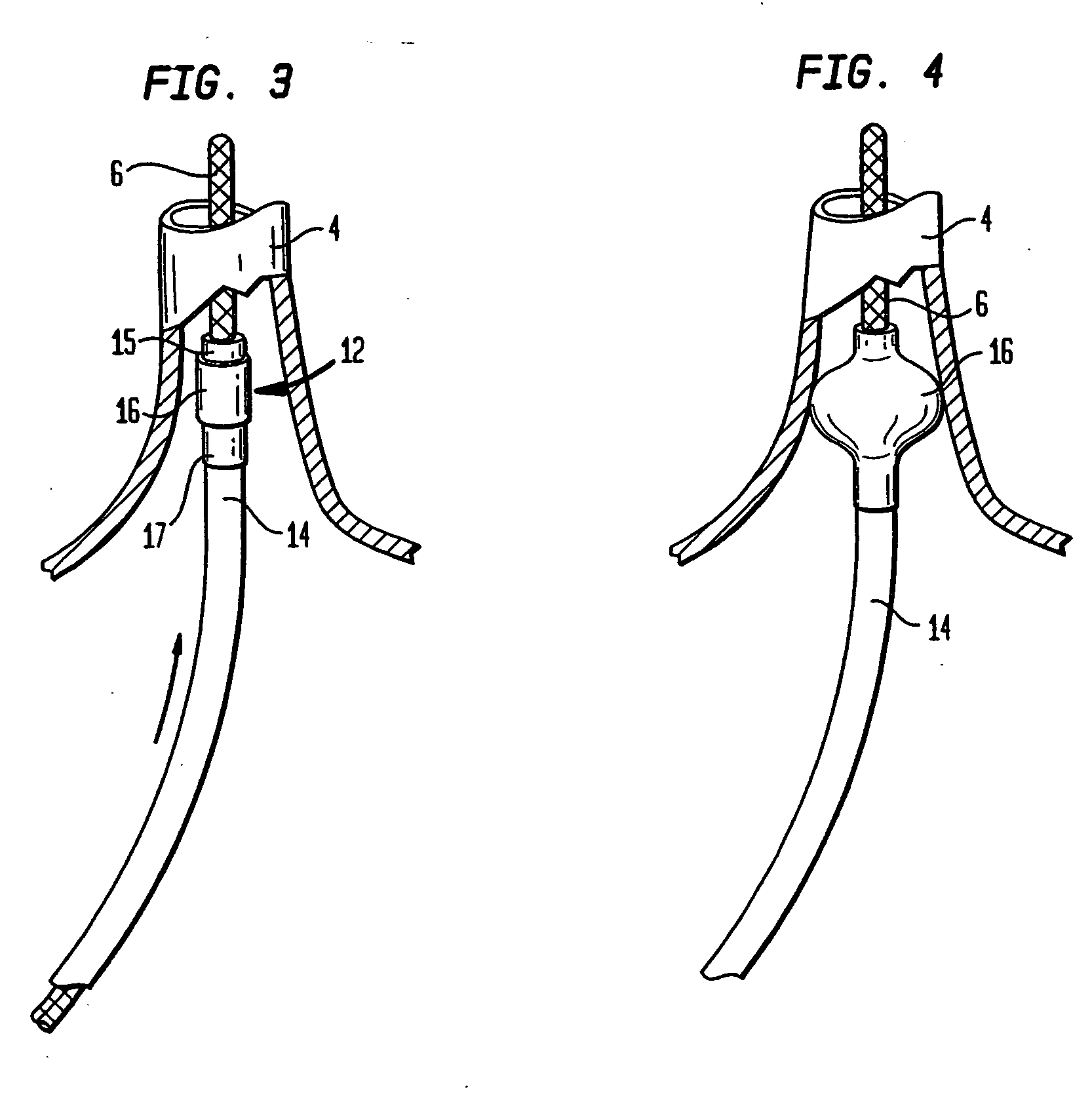Methods for ablation with radiant energy
a technology of radiant energy and ablation chamber, which is applied in the field of ablation instruments, can solve the problems of ineffective quivering, inability to achieve the effect of quivering, and inability to efficiently quiver, and achieves the effect of less risk, less time, and rapid and effective photoablation
- Summary
- Abstract
- Description
- Claims
- Application Information
AI Technical Summary
Benefits of technology
Problems solved by technology
Method used
Image
Examples
Embodiment Construction
[0069]FIG. 1 provides a schematic, cross-sectional view of a coaxial catheter ablation instrument 10 according to the invention, including a first, inner catheter 12 having an elongate body 14 and an anchor balloon 16, inflatable via one or more ports 18. A fluid for inflating the anchor balloon can be delivered through a passageway (not shown) within the elongate body or via one or more of the lumens of the device, as discussed in more detail below. The device can further include a second, coaxial, outer catheter 20 having an elongate body 24 and a projection balloon 26 inflatable via one or more ports 22. The instrument is preferably designed such that upon anchorage of the anchor balloon 16 within the heart (e.g., within a pulmonary vein), the projection balloon can be inflated such a shoulder portion 50 of the balloon 26 will be urged into close proximity with a target region 52 of cardiac tissue (e.g. an annular region of the atrial heart wall surrounding the ostium of a pulmon...
PUM
| Property | Measurement | Unit |
|---|---|---|
| wavelength | aaaaa | aaaaa |
| wavelength | aaaaa | aaaaa |
| temperature | aaaaa | aaaaa |
Abstract
Description
Claims
Application Information
 Login to View More
Login to View More - R&D
- Intellectual Property
- Life Sciences
- Materials
- Tech Scout
- Unparalleled Data Quality
- Higher Quality Content
- 60% Fewer Hallucinations
Browse by: Latest US Patents, China's latest patents, Technical Efficacy Thesaurus, Application Domain, Technology Topic, Popular Technical Reports.
© 2025 PatSnap. All rights reserved.Legal|Privacy policy|Modern Slavery Act Transparency Statement|Sitemap|About US| Contact US: help@patsnap.com



